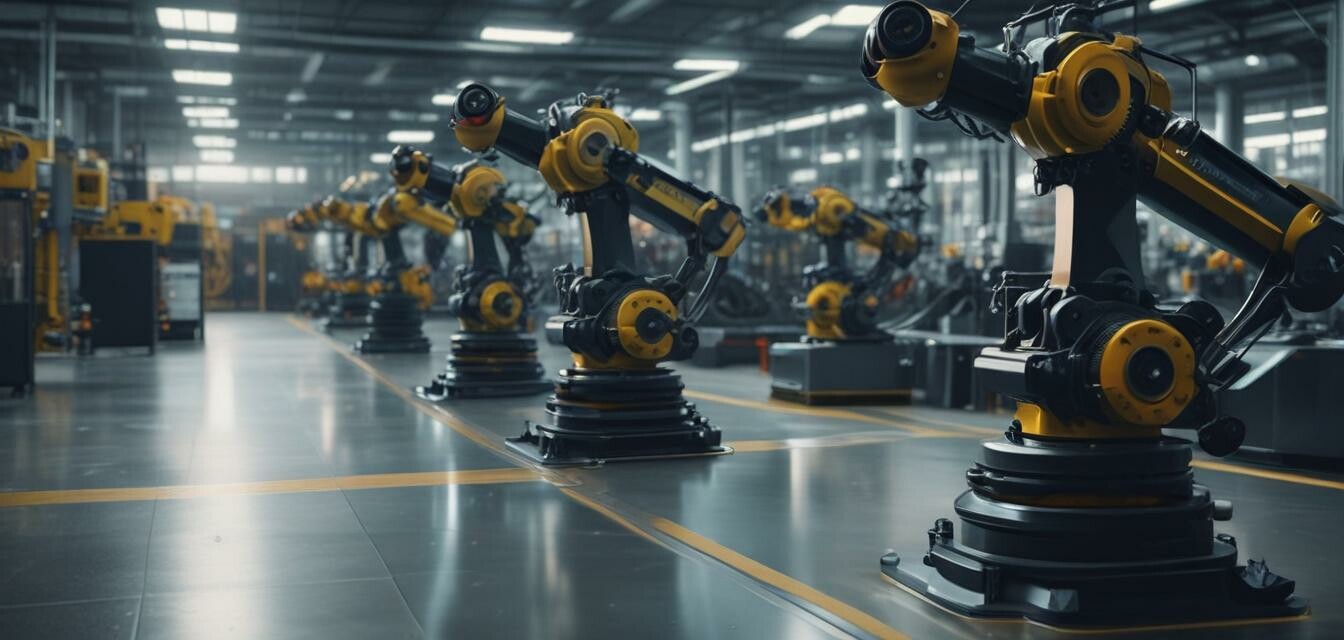
The role of robotics in power tool manufacturing
Key Takeaways
- Robotics improve efficiency and accuracy in power tool manufacturing.
- Automation can reduce human errors and enhance product quality.
- Integrating robotics can lead to cost savings in the long term.
- Robotic trends include AI, machine learning, and collaborative robots.
- The future of power tool manufacturing heavily relies on technological advancements.
As industries evolve, robotics have begun to play a pivotal role in enhancing the manufacturing processes, particularly in the domain of power tools. The integration of robotics not only optimizes the production line but also ensures that the tools produced are of the highest quality.
How robotics are transforming manufacturing processes
Robotics have changed the landscape of how power tools are manufactured. From precision assembly to innovative design processes, the implications are vast. Here are some key areas where robotics play a crucial role:
- Automation of repetitive tasks: Robots are ideal for carrying out routine and repetitive tasks, which significantly increases production speed.
- Enhanced accuracy: Robots provide a level of precision that human operators may struggle to achieve consistently, thereby decreasing the chances of defects.
- 3D printing integration: Incorporating robots with 3D printers allows for rapid prototyping of new power tools.
- Quality assurance: Robots equipped with sensors and cameras can rapidly assess the quality of tools; this spike in quality control leads to higher consumer satisfaction.
Types of robotics used in power tool manufacturing
There are several types of robots that manufacturers use in the production of power tools. Here’s a breakdown:
| Type of Robot | Function | Advantages |
|---|---|---|
| Articulated Robots | Used for welding, assembling, and material handling | Highly flexible and can move in various axes |
| SCARA Robots | Specialized in horizontal movement for assembly tasks | Fast and highly accurate for small parts |
| CARTESIAN Robots | Used for pick-and-place tasks | Simple design, easy to program |
| Collaborative Robots (Cobots) | Work alongside human operators | Increases efficiency without the need for safety cages |
Benefits of using robotics in power tool manufacturing
Adopting robotics in manufacturing processes can lead to numerous benefits:
Pros
- Increased production speed and efficiency
- Higher product quality and consistency
- Reduced overhead costs in the long run
- Safer working environment for human staff
- Ability to operate 24/7 without breaks
Cons
- High initial setup costs
- Requires skilled personnel for maintenance and management
- Potential job displacements in traditional roles
- Dependence on technology may lead to vulnerability in case of failures
Current trends in robotics within power tool manufacturing
The power tool manufacturing sector is seeing numerous trends fueled by advancements in robotics:
- AI Integration: As artificial intelligence continues to evolve, manufacturers are looking towards AI tools that allow robots to learn and adapt on the job.
- Internet of Things (IoT): Connecting machines and systems within manufacturing plants to streamline operations.
- Shift towards smaller, collaborative robots: Increased acceptance of cobots as they can work safely alongside human workers.
- Data analytics: Using data collected by robots to enhance operational efficiency and make informed decisions.
The future of robotics in power tool manufacturing
The future holds immense potential for robotics in the manufacturing of power tools. As technology advances, we can expect greater integration of intelligent systems, enabling even higher levels of productivity and efficiency. Manufacturers that stay updated with trends will have a competitive edge in delivering high-quality products to consumers.
Conclusion
In summary, the role of robotics in power tool manufacturing is profound, with far-reaching effects on production processes, product quality, and operational efficiency. To learn more about the latest developments in the power tool industry, explore our News and Trends section.
Tips for manufacturers considering robotics:
- Assess your production needs and design a realistic implementation plan.
- Invest in training for employees to bridge the skill gap created by added technology.
- Keep abreast of emerging technologies to ensure your systems stay competitive.
- Utilize data analytics to fine-tune processes and maximize productivity.